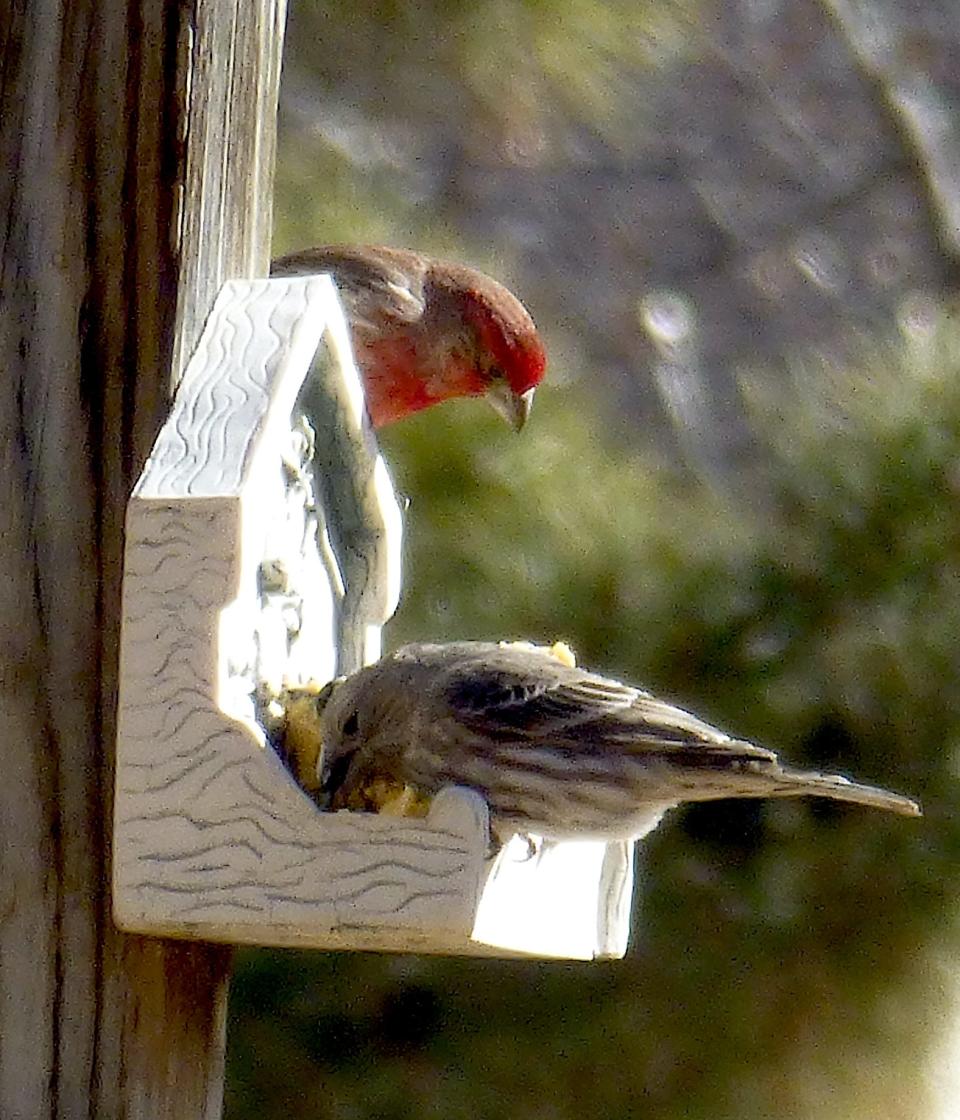Gardening for You: Vegan suet for birds
Birds are scavenging for food sources in the bleak month of February for the extra calories they need to stay warm. Furnishing fat-rich seed in bird feeders is an easy way to provide a source of calories for them. But perhaps a better source of fats for birds is suet; suet is high in the fatty oils that birds rely upon as an energy source.

Homemade suet can be made several ways. Some are complicated, others are simple. Traditional suet is the most common, but it can be quite labor-intensive as it is made from rendered animal fat. The rendering process requires acquiring the fat, chopping it into small pieces or grinding it in a meat grinder, then slowly cooking the chopped fat on low heat until it becomes liquid.
The melting step takes some time as the fat must be stirred frequently while slowly becoming liquified. Strain the liquid through a fine mesh sieve; often several melting and straining steps are needed to collect a pure liquid. Let the purified liquid solidify, then mold into desired shapes. Common shapes are small cubes, small balls or bars.
For folks who dislike handling animal fat, the recipe below from the Audubon Society (audubon.org) is an easy vegan method.

The Audubon website states that this vegetarian suet is a perfect winter substitute for birds that normally feast on insects. It is a lipid-rich treat (more on lipids follow the recipe) that provides a winter food source for year-round birds such as finches, wrens, woodpeckers, chickadees, nuthatches, and titmice.
Vegan Suet materials:
1 ½ cups shortening
¾ cups nut butter
3 ½ cups bird seed
1 cup quick oats
½ cup corn meal
Ice cube tray or other mold
Steps:
Mix dry ingredients of bird seed, oats, and corn meal together; set aside.
Combine shortening and nut butter in a separate bowl; melt; stir until completely combined.
Pour melted mixture into dry ingredients and stir until combined.
Spoon mixture into the ice cube tray.
Freeze for one to two hours and place in your suet feeder!
What not to use
Salted or dry roasted peanuts can harm birds because of the presence of toxins. Only fresh peanuts sold for human consumption should be used.
More on lipids
In winter months birds put on fat as insulators and as energy sources. Because more than 10% of a bird’s winter body weight may be fat, some birds spend most of the daylight hours seeking fatty food. The oils in these recipes are from plant lipids, a type of fatty acid.
Lipids are elegant, tiny molecules that provide structure to plant cell membranes. One important metabolic role of lipids is to mediate passage of essential elements across cell membranes as they work with certain proteins.
Ellen Peffley taught horticulture at the college level for 28 years, 25 of those at Texas Tech, during which time she developed two onion varieties. She is now the sole proprietor of From the Garden, a market garden farmette. You can email her at gardens@suddenlink.net
This article originally appeared on Lubbock Avalanche-Journal: Gardening for You: Vegan suet for birds

